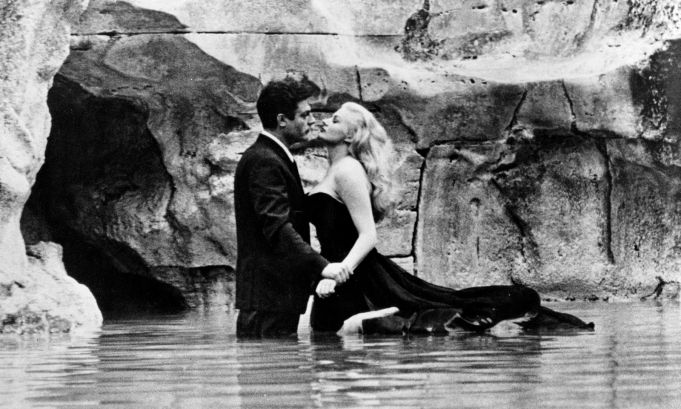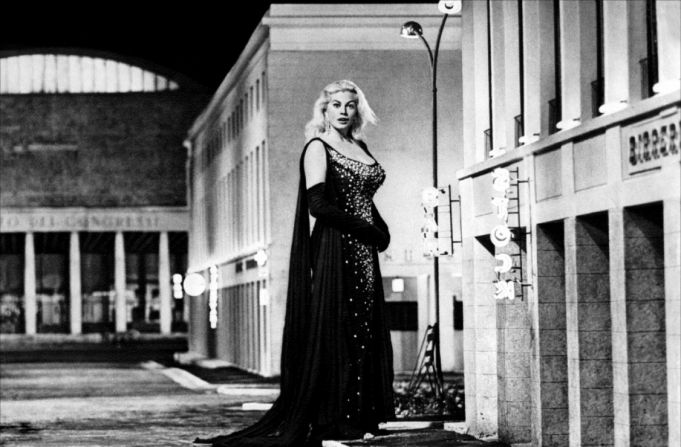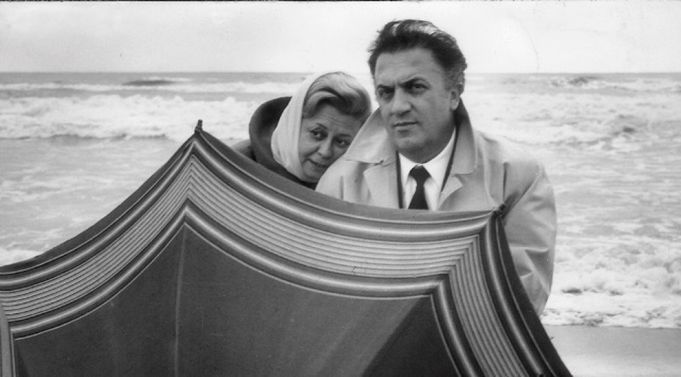Exploring the Rome sites most associated with the great film director Federico Fellini who was born in Rimini in 1920 and died in the Italian capital in 1993.
Trevi Fountain
The landmark most readily associated with Fellini is without doubt the Trevi Fountain, whose baroque majesty played a central role in La dolce vita (1960). The film's most famous scene sees Swedish actress Anita Ekberg immersed in the waters of the fountain, seducing Marcello Mastroianni to wade in after her. When Mastroianni died in 1996 the city turned off the fountain's waters, draping the monument in black; when Ekberg died in 2015 a giant banner reading "Ciao Anita" was hung over the fountain.

Via Veneto
Synonymous with the capital's so-called dolce vita era of the 1950s, Via Veneto was the go-to place for foreign film stars when Rome was known as "Hollywood on the Tiber". This glamorous influx of celebrities attracted hordes of paparazzi, which Fellini dramatised in La dolce vita. The director also used Via Veneto as the backdrop to Le notti di Cabiria (1957), starring Giulietta Masina (Fellini's wife) as a prostitute in Rome who searches in vain for true love.
Colosseum
Fellini was known to feed the cats of the Colosseum while filming Lo Sceicco Bianco (1952) starring Alberto Sordi, with the ancient amphitheatre also featuring in the backround of the motorcycle race at the start of Roma (1972).
Spanish Steps
The staircase at Trinità dei Monti makes a spectacular backdrop to Lo Sceicco Bianco when newlyweds Oscar (Leopoldo Trieste) and Wanda (Brunella Bovo), admire the grandeur of a pensione in Via Sistina.

EUR
Fellini had a weakness for the rationalist symmetry of fascist architecture, with the southern Rome district of EUR featuring in La Dolce Vita and Le Tentazioni del Dottor Antonio (1962) from the anthology film Boccaccio ’70 (1962).
St Peter's
La dolce vita opens with a panoramic perspective of St Peter's, with Marcello flying over on a helicopter carrying a statue of Jesus. Later in the film, he climbs to the top of the dome next to Ekberg. Piazza S. Pietro provides the backdrop to the ending of Lo Sceicco Bianco which also features nearby Castel S. Angelo.
Via Margutta
Fellini lived on Via Margutta, where a plaque in his honour can be found at number 110, and he regularly went for coffee at the Canova café in nearby Piazza del Popolo, which displays Fellini memorabilia today. Piazza del Popolo also features in La dolce vita, where Marcello and Maddalena (Mastroianni and Anouk Aimée) pick up a prostitute.
Termini Station
Although the least glamorous landmark on this list, Termini Station featured in many of Fellini's movies including Lo sceicco bianco, I vitelloni (1953), Le notti di Cabiria, Roma, and Ginger e Fred (a 1986 film starring Marcello Mastroianni and Giulietta Masina).
Baths of Caracalla
This massive third-century bath complex featured both in Le notte di Cabiria and La dolce vita, while another landmark further out on the Appia Antica - the Mausoleum of Cecilia Metella - appeared in Roma.

Fregene
Fellini owned a villa (since demolished) in this seaside town near Rome (Via Volosca 13), which played the setting for La dolce vita’s celebrated final scene. It also appears in Lo Sceicco Bianco, Giulietta degli Spiriti (1965) and Città della donne (1980).
Cinecittà
The hallowed film studios of Cinecittà, in the suburbs of Rome, was where Fellini shot most of his movies. Cinecittà recently opened a museum dedicated to Italian cinema which pays tribute, of course, to Fellini.
General Info
View on Map
Fellini guide to Rome
Via Margutta, 110, 00187 Roma RM, Italy



















